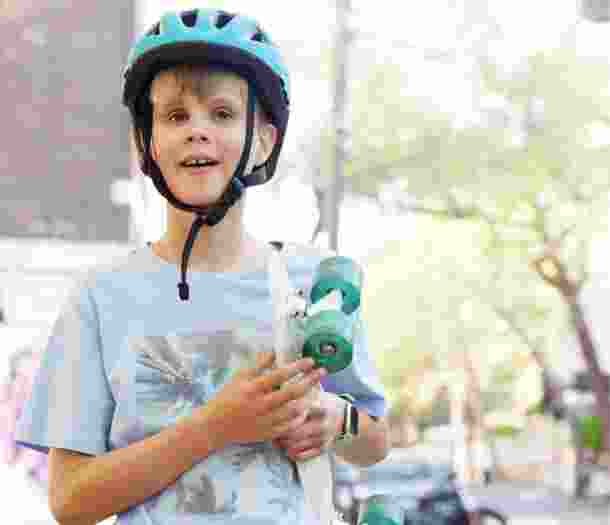On this page:
What is Children's Mobility training?
We all learn how to interact with the world from the day we are born.
Through safe play, work, travelling around, and being active, we learn how to connect with our community and be part of it.
Children who have low vision or blindness are no different, but need to develop alternative or additional ways of interacting with their environment. These skills are taught through Children’s Mobility Services.
Mobility Services teach children how to better understand their environment, and gives them techniques to confidently and safely move through those environments.
They offer skills for children with low vision or blindness to experience their day-to-day world, gain confidence, get active and ultimately get out and about independently.
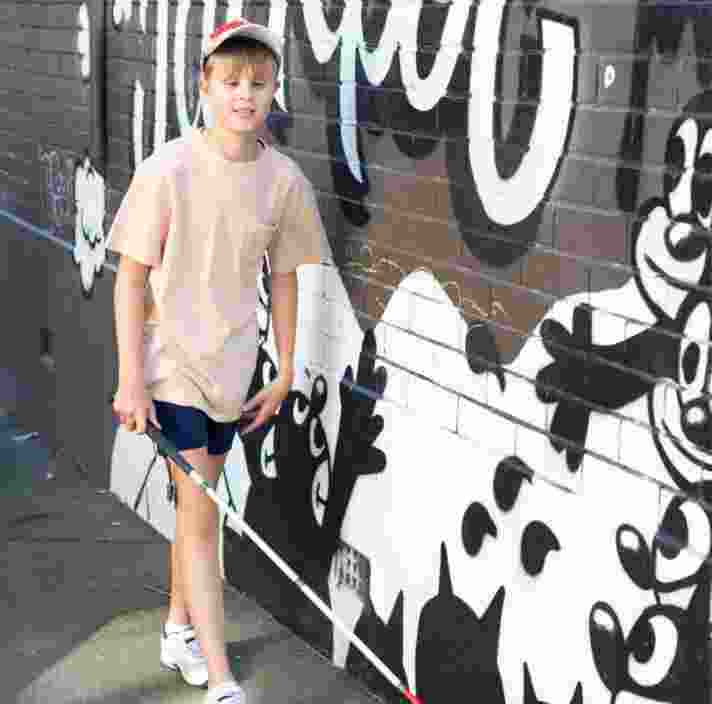
What kind of skills can Children's Mobility training provide?
Your child can learn all sorts of valuable techniques, including:
-
Travelling safely
Including skills to move through the community, catch public transport and use mobility aids to travel with confidence. -
Building relationships
Including skills to make new friends, interact with other people in the community and make the most of existing family relationships. -
Improved communication
Including skills to talk with others and use other senses like body language or expressions to communicate. -
Strategies for school and study
Including skills to get around the school yard, set up desks for class and complete homework. This training aligns with established school programs. -
Participation in activities
Including group or leisure activities like reading, playing sport or learning an instrument. -
Preparing for adulthood
Including skills to shop for groceries, manage money, cook basic meals, prepare for working life and learn independent thinking and problem-solving skills.
How is the training structured?
Programs that grow and develop as quickly as they do.
Every program is tailored to your child’s needs, age and skill level. And, just as kids quickly grow to meet new challenges or embrace new experiences, our programs do the same.
Children’s Mobility training can flex to support your child through their entire school life—from junior years through to Year 12—introducing different techniques and mobility aids when they become relevant.
Importantly, all training is delivered with a focus on fun. Children’s Mobility training teaches your child valuable practical skills while encouraging them to enjoy themselves, make friends, be creative, and explore their potential.
Support is usually provided one-on-one where your child is most comfortable, depending on their goals. It could be in your home, at school, or out and about in the general community.
In support of ongoing Children’s Mobility training, we also offer individual programs, camps, group programs, consultant services, and workshops.
Could your child benefit from Orientation & Mobility Services?
Children's Mobility Services
Does your child:
- Run into objects on the ground, at eye level or at head level?
- Bump into other children in the corridor at school?
- Stumble or hesitate at steps and gutters?
- Seem anxious when walking on uneven surfaces?
Can your child:
- Locate friends in the playground easily?
- Visually identify nearby landmarks, such as doors, letterboxes, or shop signs?
Does your child:
- Have difficulty walking in dark or dimly lit areas?
- Have difficulty moving from a dark room to a light area, or vice versa?
- Have difficulty moving about in glary conditions?
- Flinch at shadows on the footpath?
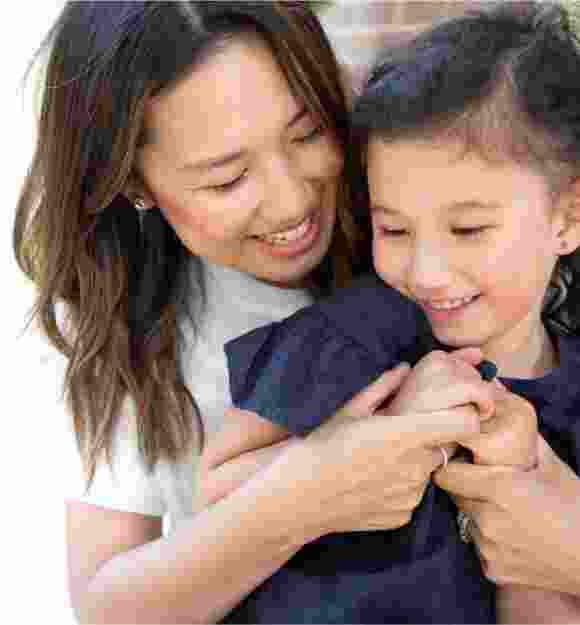
Can your child:
- See the traffic lights?
- Cross the road safely?
- Follow directions well?
Does your child:
- Appear anxious when travelling in familiar or unfamiliar environments?
- Appear anxious in busy and crowded areas?
- Get lost easily, even in familiar areas?
A child experiencing any of the above difficulties may benefit from the skills learned in Children’s Mobility Services.
What are Orientation & Mobility skills?
Our training programs are undertaken in accordance with the Orientation & Mobility Framework.
The framework covers a range of practical skills to help with daily life.
- Self & sense: Understanding the body, the body’s position in space and the environment around it.
- Spatial concepts: Developing orientation awareness and a variety of techniques to remain comfortably oriented while travelling.
- Thinking and problem solving: Identifying a problem, learning to understand options, actions and possible consequences, planning and implementing a strategy, and evaluating the results.
- Communication: Understanding of a variety of communication methods, and where, how, and when they can be used for best results.
- Safety: Developing awareness of potential dangers and hazards, and taking appropriate steps to increase safety.
- Exploration: Understanding how to access information from the space around you, and learning specific movements to help in comprehending environments quickly.
- Environment & access: Developing knowledge of a variety of common environments, their structural features and strategies for safe navigation in different areas.
- Route travel: Learning how to travel safely from one destination to another, with a focus on mapping concepts and orientation skills.
- Traffic: Understanding road concepts, road configurations, road rules and traffic flow, and safe crossing procedures and decision making skills.
- Mapping: Understanding of key mapping concepts and use of a variety of maps and mapping tools, such as digital, audio, mental and tactile maps, to aid orientation and independent travel.
- Mobility aids: Understanding how and when to safely use a variety of physical mobility aids, and when and where each variety of aid is most appropriate.
Deverell, L., Taylor, S., & Prentice, J. (2009). Orientation and mobility methods: Techniques for independent travel. Melbourne, Australia: Guide Dogs Victoria.
Learn about our programs and group workshops
In addition to ongoing training, we offer a range of support programs and workshops.
Before developing an individual training plan, our Orientation & Mobility Specialists conduct assessments with each child, their parents, teachers, and a range of relevant professionals.
We then begin work in whatever environment your child is most comfortable, for the best chance at success: home, school, work, or within our specialised training facility in Kew.
At home:
Our Mobility Specialists aim to establish a strong and ongoing relationship with every child and their family.
We work closely with families to develop individual program goals. We also encourage children to play a role in directing their own mobility program, to further improve confidence and independence.
At school:
Specialists can attend a child’s school and also participate in Student Support Group Meetings. This involves meeting at the school to discuss the specific goals of the mobility program, and can include professional development sessions for personnel at the school.
Our Mobility Specialists can also complete an assessment of the specific school grounds. After looking over the environment, we can make recommendations to create a safer and easier setting for the student.
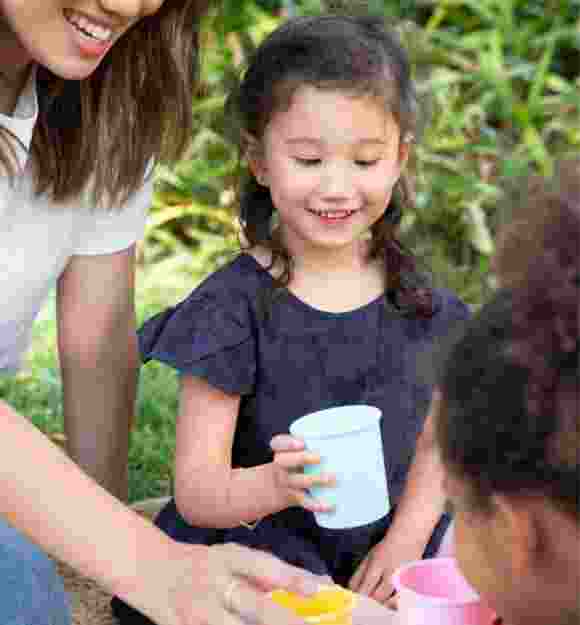
At workshops, camps and events:
We run four to five Orientation & Mobility group programs each year. The ‘camps’ give children opportunities to develop social networks while honing their mobility skills.
Occupational Therapists are involved in our group programs and encourage additional practical independent living skills, such as:
- Food preparation
- Kitchen safety
- Personal care
- Money handling
Some of the group programs are based on site at Guide Dogs Victoria, while off-site events have been held in Ballarat, Melbourne’s CBD, and on the Great Ocean Road.
Technology training.
Want to know more about how technology can assist your mobility needs? We can help you to use technology you already own in different and more effective ways – like your smartphone for example – or we can assess you for specific mobility technology like GPS devices.
Service charges
Children’s Mobility Services are available to children of all ages and their families, regardless of whether you have access to government funding.
Any child with low vision or blindness can be referred to our Mobility Service for assessment and training. We recommend planning ahead and referring a child well before any significant milestones in their life: for example, before a child transitions from kindergarten to primary school.
If you have access to funding by a government agency such as Better Start, the National Disability Insurance Scheme, the Transport Accident Commission, or are subject to a court case, we will seek costs for the services directly from these departments with your permission.
As a philanthropic organisation, we will always support people to access services regardless of your financial position.
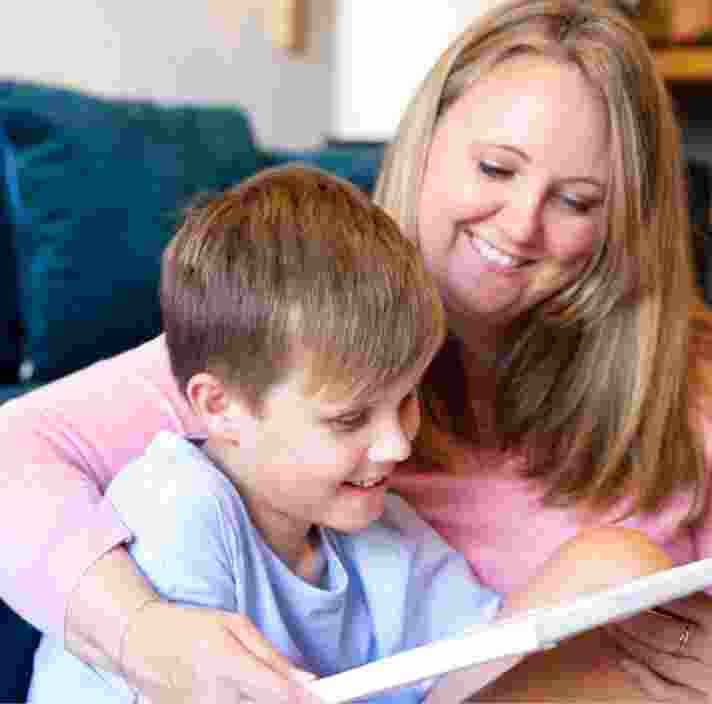
Request a service
Take the first step towards greater independence
Contact the Children’s Mobility Service for more information:
- Phone: 1800 804 805
- Email: referrals@guidedogsvictoria.com.au
Could you access this support via NDIS?
Navigate Funding
Have you checked your eligibility to access this support through the National Disability Insurance Scheme (NDIS)? Many people include this support as part of their NDIS plan.
If you’re eligible for the NDIS, we can cut through the jargon, assist with your plan—or pre-planning—and get you on the path towards your personal goals. You can request free Support Coordination or find out more about your potential eligibility to access this service through the NDIS now.
If you’re older than 65, funded supports are accessed through the aged care system. You can register with My Aged Care by contacting their help line on 1800 200 422.
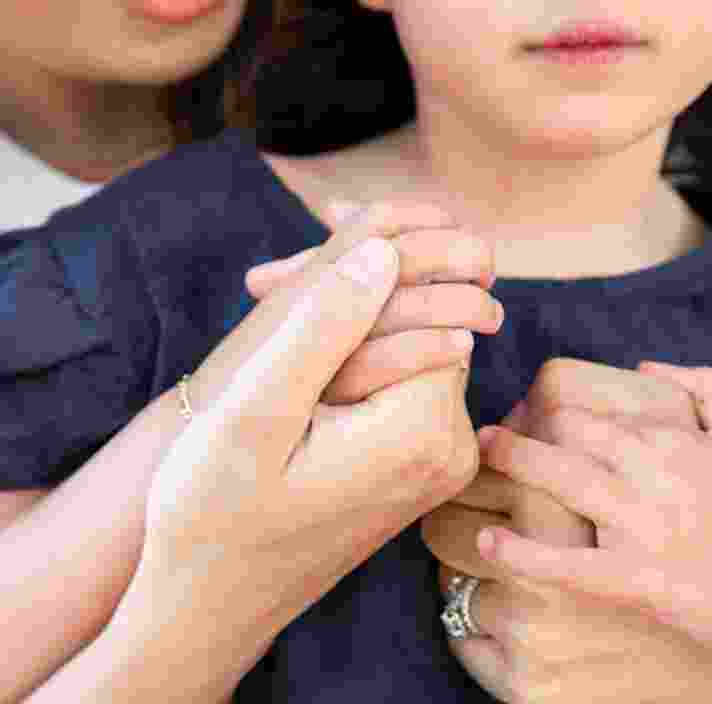
Ready to continue?
Seems like you have filled this form earlier. Let’s pick up where you left off.
